A Mobile Ad hoc Network (MANET) is a collection of wireless mobile nodes forming a temporary network without using any existing infrastructure i.e., nodes are connected through a wireless medium forming rapidly changing topologies. The wireless communication medium has variable and unpredictable characteristics. Furthermore, node mobility creates a continuously changing communication topology in which paths break and new one form dynamically We propose various protocol independent metrics to capture interesting mobility characteristics, including spatial and temporal dependence and geographic restrictions. In addition, a rich set of parameterized mobility models is introduced including Random Waypoint, Group Mobility, Freeway and Manhattan models. Based on these models several test-suite scenarios are chosen carefully to span the metric space. By using NS2 we evaluated various MANET routing protocols, including DSR, AODV and DSDV. Our results show that the protocol performance may vary drastically across mobility models and performance rankings of protocols may vary with the mobility models used. The present paper focuses on study and performance evaluation of these categories using NS2 simulations. We have considered qualitative and quantitative criteria.
Keywords |
| MANET, AODV, DSR, NS2 |
INTRODUCTION |
| A Mobile ad hoc network is a group of wireless mobile computers (or nodes) in which nodes collaborate by
forwarding packets for each other to allow them to communicate outside range of direct wireless transmission. Ad hoc
networks require no centralized administration or fixed network infrastructure such as base stations or access points,
and can be quickly and inexpensively set up as needed. A MANET is an autonomous group of mobile users that
communicate over reasonably slow wireless links. The network topology may vary rapidly and unpredictably over
time, because the nodes are mobile. The network is decentralized, where all network activity, including discovering the
topology and delivering messages must be executed by the nodes themselves. Hence routing functionality will have to
be incorporated into the mobile nodes. MANET is a kind of wireless ad-hoc network and it is a self-configuring
network of mobile routers (and associated hosts) connected by wireless links the union of which forms an arbitrary
topology. The routers, the participating nodes act as router, are free to move randomly and manage themselves
arbitrarily; thus, the network's wireless topology may change rapidly and unpredictably. Such a network may operate in
a standalone fashion, or may be connected to the larger Internet. |
| The mobile nodes can directly communicate to those nodes that are in radio range of each other, whereas
others nodes need the help of intermediate nodes to route their packets. These networks are fully distributed, and can
work at any place without the aid of any infrastructure. This property makes these networks highly robust. In Figure 1.1
nodes A and C must discover the route through B in order to communicate. The circles indicate the nominal range of each node„s radio transceiver. Nodes A and C are not in direct transmission range of each other, since A„s circle does
not cover C. |
Characteristics of MANET |
| Mobile ad hoc network nodes are furnished with wireless transmitters and receivers using antennas, which
may be highly directional (point-to-point), omnidirectional (broadcast), probably steerable, or some combination there
of [1]. At a given point in time, depending on positions of nodes, their transmitter and receiver coverage patterns,
communication power levels and co-channel interference levels, a wireless connectivity in the form of a random,
multihop graph or "ad hoc" network exists among the nodes. This ad hoc topology may modify with time as the nodes
move or adjust their transmission and reception parameters. The characteristics of these networks are summarized as
follows: |
| A. Communication via wireless means. |
| B. Nodes can perform the roles of both hosts and routers. |
| C. Bandwidth-constrained, variable capacity links. |
| D. Energy-constrained Operation. |
| E. Limited Physical Security. |
| F. Dynamic network topology. |
| G. Frequent routing updates. |
ROUTING PROTOCOLS OF AD HOC NETWORKS |
| There are several routing protocols have been developed for AdHoc Mobile networks [1]. Such protocols must
deal with typical limitations of these networks which include high power consumption, low bandwidth and high error
rates. |
| A. Table-Driven Routing Protocols |
| In table driven routing protocols, consistent and up to date routing information to all nodes is maintained at
each node |
| B. On-Demand Routing Protocols |
| In On-Demand routing protocols, the routes are created as and when required. When a source wants to send to
a destination, it invokes the route discovery mechanisms to find the path to the destination. |
AD HOC ON-DEMAND DISTANCE VECTOR ROUTING (AODV) |
| AODV [2] discovers routes on an as needed basis via a similar route discovery process. However, AODV
adopts a very different mechanism to maintain routing information. |
| It uses traditional routing tables, one entry per destination. This is in contrast to DSR, which can maintain
multiple route cache entries for each destination. Without source routing, AODV relies on routing table entries to
propagate an RREP back to the source and, subsequently, to route data packets to the destination. AODV uses sequence
numbers maintained at each destination to determine freshness of routing information and to prevent routing loops. All
routing packets carry these sequence numbers. An important feature of AODV is the maintenance of timer-based states
in each node, regarding utilization of individual routing table entries. A routing table entry is expired if not used
recently. A set of predecessor nodes is maintained for each routing table entry, indicating the set of neighbouring nodes
which use that entry to route data packets. These nodes are notified with RERR packets when the next-hop link breaks.
Each predecessor node, in turn, forwards the RERR to its own set of predecessors, thus effectively erasing all routes
using the broken link. In contrast to DSR, RERR packets in AODV are intended to inform all sources using a link when
a failure occurs. Route error propagation in AODV can be visualized conceptually as a tree whose root is the node at
the point of failure and all sources using the failed link as the leaves. |
DYNAMIC SOURCE ROUTING (DSR) |
| The key feature of DSR [4] is the use of source routing. That is, the sender knows the complete hop -by-hop
route to the destination. These routes are stored in a route cache. The data packets carry the source route in the packet
header. When a node in the ad hoc network attempts to send a data packet to a destination for which it does not already
know the route, it uses a route discovery process to dynamically determine such a route. Route discovery works by
flooding the network with route request (RREQ) packets. Each node receiving an RREQ rebroadcasts it, unless it is the
destination or it has a route to the destination in its route cache. Such a node replies to the RREQ with a route reply
(RREP) packet that is routed back to the original source. RREQ and RREP packets are also source routed. The RREQ
builds up the path traversed across the network. The RREP routes itself back to the source by traversing this path
backward. The route carried back by the RREP packet is cached at the source for future use. If any link on a source
route is broken, the source node is notified using a route error (RERR) packet. The source removes any route using this
link from its cache. A new route discovery process must be initiated by the source if this route is still needed. DSR
makes very aggressive use of source routing and route caching. |
PERFORMANCE METRICS |
| A. Packet delivery fraction |
| The ratio of the data packets delivered to the destinations to those generated by the CBR sources. Packets
delivered and packets lost are taking in to consideration. |
| B. Throughput |
| There are two representations of throughput; one is the amount of data transferred over the period of time
expressed in kilobits per second (Kbps). The other is the packet delivery percentage obtained from a ratio of the
number of data packets sent and the number of data packets received. |
| C. End to End Delay |
| The time taken by the packet to reach the destination is called end to end delay so it is the time taken to travel
between two ends i.e. source and destination. |
SIMULATION RESULT AND ANALYSIS |
| A. Simulation Environment |
| The simulation experiment is carried out in LINUX (FEDORA 8). The detailed simulation model is based on
network simulator-2 (ver-2.34), is used in the evaluation. The NS instructions can be used to define the topology
structure of the network and the motion mode of the nodes, to configure the service source and the receiver, to create
the statistical data track file and so on. |
| B. Traffic Model |
| Continuous bit rate (CBR) traffic sources are used. The source-destination pairs are spread randomly over the
network |
| C. Mobility Model |
| The mobility model used is Random waypoint mobility model because it models the random movement of the
mobile nodes |
| We have used two scenarios to compare AODV and DSR, some parameters with a specific value are
considered are shown below: |
| [3]. G. Pei, M. Gerla, and T. W. Chen. Fisheye state routing in mobile ad hoc networks. |
CONCLUSION |
| We have compared two On-demand routing protocols, namely, Ad hoc On-Demand Distance Vector
Routing (AODV) and Dynamic Source Routing (DSR).Three different simulation scenarios are generated in
terms of simulation time, number of nodes and connections among nodes. Other network parameters are
kept constant during the simulation. It is observed that the packet loss is very less in case of AODV, initially
but it increases substantially on the simulation time increases. In case of DSR simulation the packet loss is
very high initially but it decreases substantially on the simulation time increases. So, we can conclude that if
the MANET has to be setup for a small amount of time then AODV should be prefer due to low initial
packet loss and DSR should not be prefer to setup a MANET for a small amount of time because initially
there is packet loss is very high. If we have to use the MANET for a longer duration then both the protocols can be used, because after sometimes both the protocols have same ratio of packet delivering. But AODV
have very good packet receiving ratio in comparison to DSR. |
Figures at a glance |
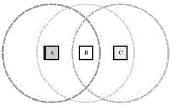 |
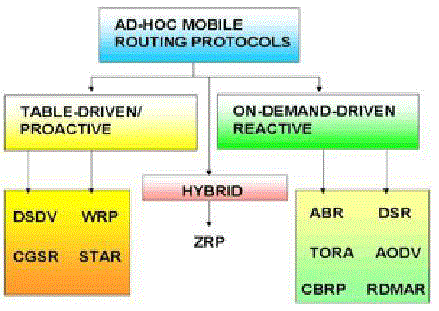 |
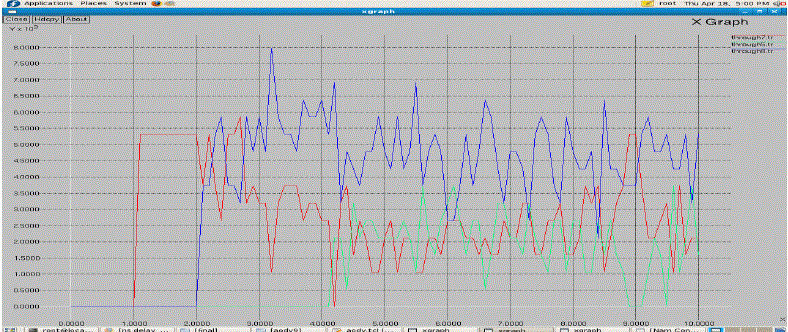 |
| Figure 1 |
Figure 2 |
Figure 3 |
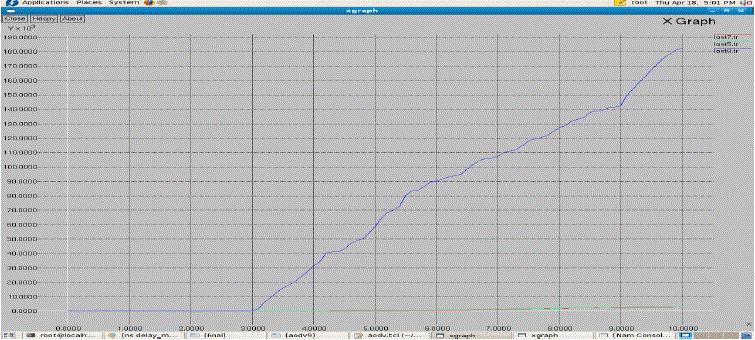 |
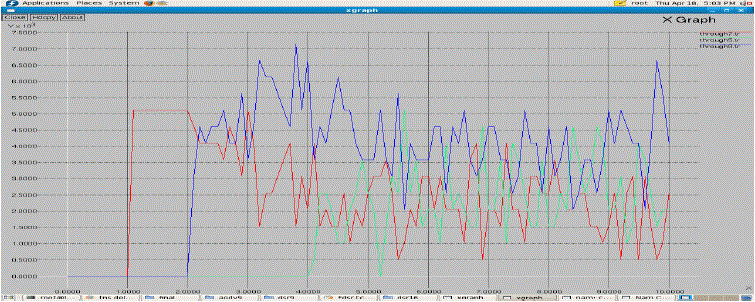 |
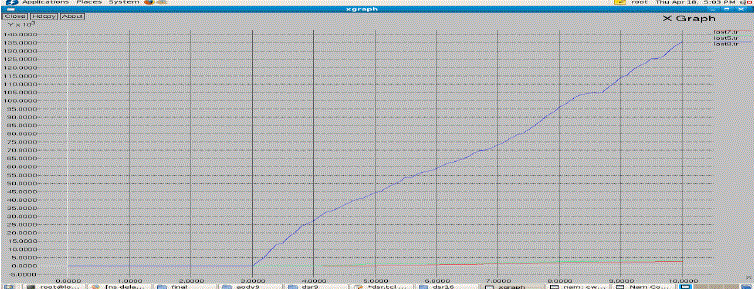 |
| Figure 4 |
Figure 5 |
Figure 6 |
|
References |
- Charles E. Perkins and Elizabeth M. Royer- ?Ad-Hoc On Demand Distance Vector v Routing?,
- David B. Johnson- ?Routing in ad hoc networks of mobile hosts?
- G. Pei, M. Gerla, and T. W. Chen. Fisheye state routing in mobile ad hoc networks.
- Josh Broch, DB Johnson, DA Maltz, ?The Dynamic Source Routing Protocol for Mobile Ad Hoc Networks?
- Mark Gries, ?The Network Simulator NS-2 tutorial?
- M. Gerla, X. Hong, and G. Pei. Landmark routing for large ad hoc wireless networks.
- P. Jacquet, and P. Muhlethaler, et al, ?Optimized Link State Routing Protocol?
- S. R. Das, R. Castaneda, and J. Yan,?Simulation-based performance evaluation of routing protocols for mobile ad hoc networks?,
- Vincent D. Park and M. Scott Corson- ?A highly adaptive distributed routing algorithm for mobile wireless networks?
|